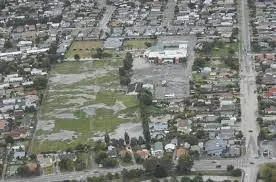Definition: Pipe pressure drop is the reduction in fluid pressure as it flows through a pipe due to frictional forces acting on the fluid.
Click the Translate button(see right) on this post to set your Own Language to understand more perfectly!!
Pipe Pressure Drop Calculator
Definition Continue:Pipe Pressure Drop
Pipe pressure drop is the reduction in fluid pressure as it flows through a pipe due to frictional forces acting on the fluid.
Key Factors:
Flow Rate (Q): The volume of fluid flowing through the pipe per unit time, typically measured in m³/s or ft³/s.
Pipe Diameter (D): The internal diameter of the pipe, measured in meters or feet.
Pipe Length (L): The total length of the pipe, measured in meters or feet.
Fluid Viscosity (μ): A measure of the fluid's resistance to flow, typically measured in Pa·s or lb/(ft·s).
Sample Values:
Flow Rate (Q): 0.1 m³/s
Pipe Diameter (D): 0.05 m
Pipe Length (L): 50 m
Fluid Viscosity (μ): 0.001 Pa·s (water at 20°C)
Calculation Example:
Using the provided formula:
pressure drop = (128 * fluidViscosity * pipeLength * flowRate) / (Math. PI * Math. pow(pipeDiameter, 4))
Substitute the values:
pressure drop = (128 * 0.001 Pa·s * 50 m * 0.1 m³/s) / (Math. PI * Math. pow(0.05 m, 4))
pressure drop ≈ 2052.5 Pa
Therefore, the pressure drop in the pipe is approximately 2052.5 Pascals.
Additional Considerations:
Flow Regime: The flow regime (laminar or turbulent) affects the pressure drop calculation. The provided formula is for laminar flow.
Pipe Roughness: The roughness of the pipe inner surface increases friction and pressure drop.
Fluid Density: For compressible fluids (gases), fluid density changes along the pipe, affecting pressure drop.
Fittings and Valves: Additional pressure drops occur due to fittings, valves, and other components in the piping system.
Other Calculations:
Reynolds Number: To determine the flow regime (laminar or turbulent).
Friction Factor: For turbulent flow, the Darcy-Weisbach equation is often used, which involves the friction factor.
By considering these factors and using appropriate calculation methods, you can accurately estimate the pressure drop in a piping system.
Let's Delve Deeper into Pipe Pressure Drop
Deeper Dive into Calculation Methods:
While the provided formula is suitable for laminar flow, most industrial applications involve turbulent flow. In such cases, the Darcy-Weisbach equation is commonly used:
ΔP = f * (L/D) * (ρ * V^2) / 2
Where:
ΔP = pressure drop (Pa)
f = Darcy friction factor
L = pipe length (m)
D = pipe diameter (m)
ρ = fluid density (kg/m³)
V = fluid velocity (m/s)
The Darcy friction factor, f, depends on the Reynolds number (Re) and relative roughness of the pipe. Several correlations (e.g., Moody chart, Colebrook-White equation) are available to determine f.
Specific Applications:
Pipe pressure drop calculations are essential in various fields:
Hydraulic Systems: Designing piping networks for optimal fluid flow and energy efficiency.
HVAC Systems: Determining fan or pump requirements for air or water distribution.
Process Industries: Calculating pressure drops in pipelines for chemical, petrochemical, and other processes.
Oil and Gas Industry: Analyzing pressure drops in pipelines for transportation of crude oil and natural gas.
10 fluids names with their density (kg/m³) & Viscosity(Pa.s)
Water: Density = 1000 kg/m³, Viscosity = 0.001 Pa·s
Air: Density = 1.225 kg/m³ (at 15°C), Viscosity = 0.0000181 Pa·s
Gasoline: Density = 750 kg/m³, Viscosity = 0.0006 Pa·s
Glycerin: Density = 1260 kg/m³, Viscosity = 1.49 Pa·s
Mercury: Density = 13534 kg/m³, Viscosity = 0.00155 Pa·s
Ethanol: Density = 789 kg/m³, Viscosity = 0.0012 Pa·s
Olive Oil: Density = 918 kg/m³, Viscosity = 0.084 Pa·s
Kerosene: Density = 810 kg/m³, Viscosity = 0.002 Pa·s
Blood: Density = 1060 kg/m³, Viscosity = 0.0035 Pa·s
Honey: Density = 1400 kg/m³, Viscosity = 10 Pa·s
How to Earn Money using the knowledge of Pipe Pressure Drop calculation in our real Life????
Monetizing Pipe Pressure Drop Calculations
Understanding pipe pressure drop is crucial in various industries. Here's how this knowledge can be monetized:
Consulting Services
System Optimization: Help industries optimize fluid flow systems by minimizing pressure drops, reducing energy consumption, and increasing efficiency.
Troubleshooting: Diagnose and resolve pressure-related issues in piping systems.
Equipment Selection: Assist in selecting pumps, compressors, and other equipment based on accurate pressure drop calculations.
Engineering Design
Piping System Design: Design efficient and cost-effective piping systems for various applications.
Hydraulic System Design: Design hydraulic systems considering pressure drop to optimize performance.
Process Plant Design: Incorporate pipe pressure drop calculations into process plant design.
Sales and Marketing
Pump and Compressor Sales: Sell pumps, compressors, and other fluid handling equipment based on accurate pressure drop calculations.
Pipe and Fitting Sales: Offer technical expertise in selecting the right pipe and fittings for specific applications.
Software Development
Pipe Sizing Software: Develop software to automate pipe pressure drop calculations and system design.
Hydraulic Simulation Software: Create software for simulating fluid flow in complex piping systems.
Education and Training
Workshops and Seminars: Conduct training programs on pipe pressure drop calculations and fluid flow principles.
Online Courses: Develop online courses on pipe design and hydraulic systems.
Key to Success:
Deep understanding of fluid mechanics and pipe flow principles.
Proficiency in using pipe design software and calculation tools.
Ability to communicate technical information clearly to clients and colleagues.
Networking with engineers and industry professionals.
By effectively applying your knowledge of pipe pressure drop calculations, you can create value for industries and generate income through various avenues.
Do YOU Want To Earn Money In Various Ways, Click The Link & Explore Your Field of Interest!!!




























